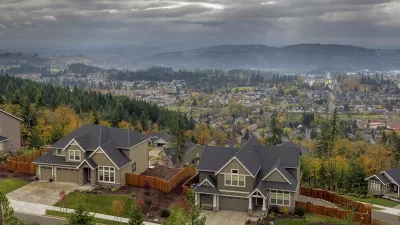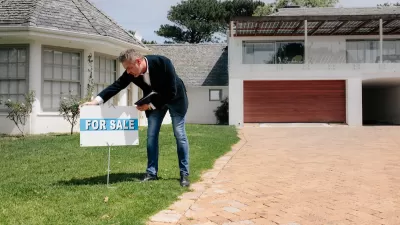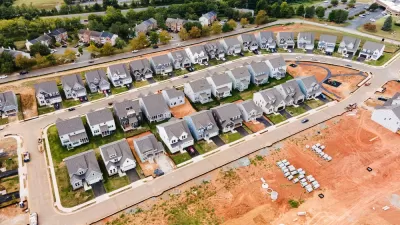Homeownership rates declined precipitously in the United States up until 2016. While that trend has reversed in more recent years, it's still hard to tell what the future of homeownership will be.

Homeownership rates declined precipitously in the United States up until 2016. While that trend has reversed in more recent years, it's still hard to tell what the future of homeownership will be.
Jonathan Spader shares insight into his recent working paper that that describes "three potential scenarios for growth in the number of homeowner and renter households from 2018-2038."
Here's how Spader sets the context for this examination:
The dramatic decline in the homeownership rate—from a high of 69 percent in 2004 to a low of 63 percent in 2016—has generated substantial discussion about the future of homeownership in the United States. While the recent uptick in the homeownership rate—to above 64 percent in 2018—ended the rate’s decline, there continues to be considerable uncertainty about its future trajectory. For example, if the macroeconomy continues to support full employment and wages continue to grow, then it is likely the homeownership rate will continue to rise. Conversely, if the economy weakens or enters a recession, then the homeownership rate might well again start to fall.
As for the projections, three scenarios (i.e., high, low, and base) all share one common trait: most of the growth between 2018 and 2038 will go to homeownership households, but under the base scenario, those new homeowners households would be offset by "changes in the demographic composition of U.S. households by age, race/ethnicity, and family type," according to Spader.
To describe the factors that could sway the future outcomes of the housing market, Spader concludes with this:
In the near term, the homeownership rate’s actual trajectory will likely depend on the occurrence and timing of broader changes in the macroeconomy. Over the longer-term, the trajectory of the homeownership rate will be influenced by a larger set of factors related to households’ demand for housing as a place to live, their demand for the investment attributes of homeownership, any constraints on their ability to access mortgage credit, and the number of homes that are for sale.
FULL STORY: Three Scenarios for Growth in Homeowner and Renter Households

Alabama: Trump Terminates Settlements for Black Communities Harmed By Raw Sewage
Trump deemed the landmark civil rights agreement “illegal DEI and environmental justice policy.”

Study: Maui’s Plan to Convert Vacation Rentals to Long-Term Housing Could Cause Nearly $1 Billion Economic Loss
The plan would reduce visitor accommodation by 25% resulting in 1,900 jobs lost.

Planetizen Federal Action Tracker
A weekly monitor of how Trump’s orders and actions are impacting planners and planning in America.

DC Extends Application Window for Outdoor Dining Permits
District restaurants will have until the end of November to apply, but businesses with permits in rush hour parking lanes must end operations on July 31.

Wind Energy on the Rise Despite Federal Policy Reversal
The Trump administration is revoking federal support for renewable energy, but demand for new projects continues unabated.

Passengers Flock to Caltrain After Electrification
The new electric trains are running faster and more reliably, leading to strong ridership growth on the Bay Area rail system.
Urban Design for Planners 1: Software Tools
This six-course series explores essential urban design concepts using open source software and equips planners with the tools they need to participate fully in the urban design process.
Planning for Universal Design
Learn the tools for implementing Universal Design in planning regulations.
Caltrans
Smith Gee Studio
Institute for Housing and Urban Development Studies (IHS)
City of Grandview
Harvard GSD Executive Education
Toledo-Lucas County Plan Commissions
Salt Lake City
NYU Wagner Graduate School of Public Service





























